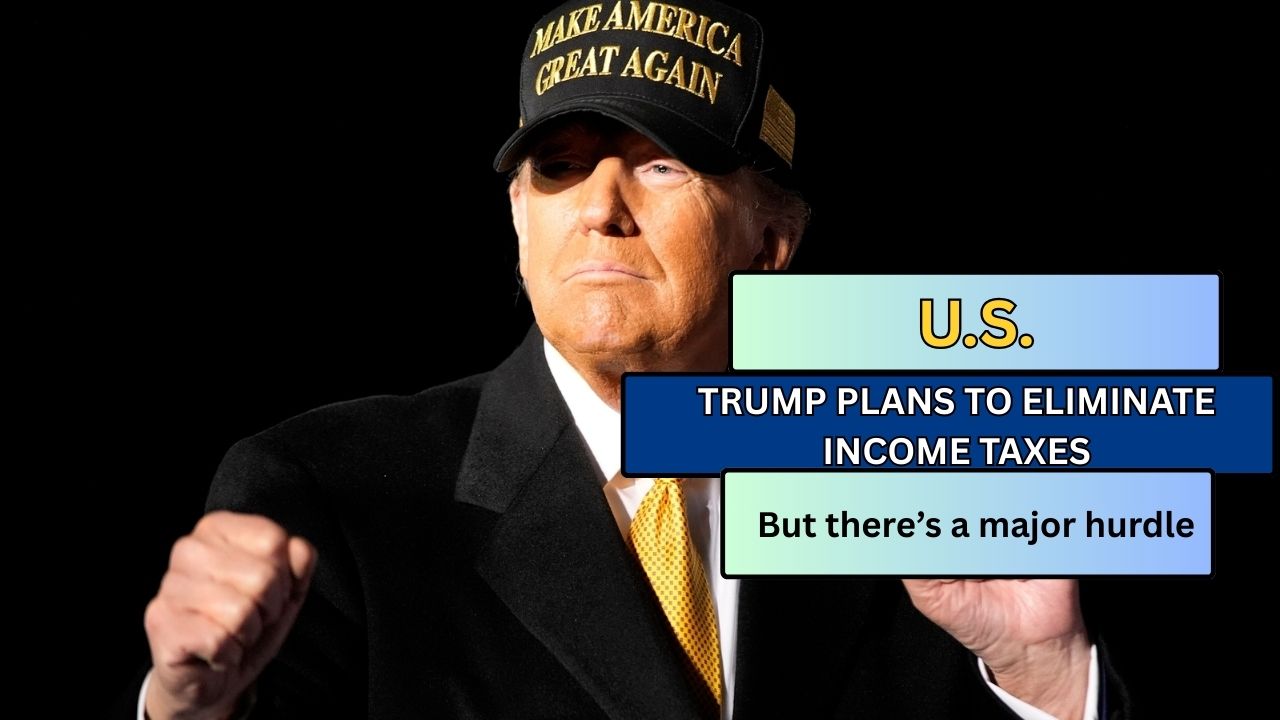President Donald Trump reiterated a bold goal Sunday night that he and his administration have floated during his second term: envisioning a future where Americans no longer pay income taxes, thanks to tariffs.
“We’re going to make a lot of money, and we’re going to cut taxes for the people of this country,” Trump said before boarding Air Force One after attending Pope Francis’ funeral in Rome. “It’ll take a little while before we do that, but we’re going to be cutting taxes, and it’s possible we’ll do a complete tax cut, because I think the tariffs will be enough to cut all of the income tax.”
While the idea of ending income taxes sounds appealing, replacing that revenue with tariffs is fraught with challenges.
The math behind tariffs replacing taxes
To even attempt replacing income taxes with tariffs, rates would need to skyrocket — much higher than the already steep tariffs the Trump administration has set today.
The federal government currently collects about $3 trillion annually from income taxes. Meanwhile, the U.S. imports about $3 trillion worth of goods each year. For tariffs to cover that gap, they would need to be at least 100% on all imported goods, explained Torsten Slok, chief economist at Apollo Global Management, in a note to investors.
Today, America’s effective tariff rate sits at 22.8%, according to Fitch Ratings. Replacing income tax revenue would require quadrupling that rate — and America’s current tariffs are already the highest among developed countries, posing risks of pushing both the U.S. and global economies into recession.
But even that drastic hike wouldn’t be straightforward. As prices increase, demand falls. That’s why major U.S. companies this earnings season have reported that Trump’s trade policies are inflating costs and causing consumers to cut back on spending across industries — from airlines to fast food.
“The math just doesn’t add up,” said Erica York, vice president of federal tax policy at the Tax Foundation. “Not even close.”
Currently, the tariffs in place — even after accounting for reduced consumer demand — are expected to bring in just $170 billion annually, according to the Tax Foundation. That figure falls far short of the revenue generated by income taxes.
Finding the perfect balance between revenue needs and consumer demand would be a massive challenge, likely requiring even steeper price hikes.
“The challenge is that it is unclear what will happen to sales if all imported products double in price,” Slok said. “Given higher prices result in lower sales, it may require as much as 200% tariffs on all imported goods for the total tariff revenue to replace income taxes.”
In short, tariffs high enough to fully replace income taxes could lead to a fourfold price increase on all imported goods.
“It’s mathematically impossible to do that, and it’s probably not a good trade for most people,” York said. “There are versions of this that would make lower- and middle-income households worse off,” because it would replace a progressive tax system with a regressive one.
Still, Trump suggested last week in an interview with Time that a 50% tariff rate within a year would be considered a “total victory,” arguing, “the country will be making a fortune.”
Other hurdles ahead
A major issue with Trump’s proposal is that eliminating the federal income tax would require an act of Congress. While further tax cuts might be possible, York pointed out that no legislation proposing the complete removal of income taxes currently exists, nor does there seem to be broad political support for such a move.
Even assuming a bill was introduced and Americans accepted significantly higher prices in exchange for zero income taxes, another problem remains: Trump’s tariffs are designed to encourage domestic manufacturing. If companies move production to the U.S. and imports plummet, tariff revenue would dry up.
Trump acknowledged this risk before departing Rome. He cited the example of the 145% tariff imposed on most Chinese goods, which has virtually halted trade with China.
“You know, people talk about going cold turkey with China, just forget about it,” Trump said. “Now they’re not doing any business with us. You know, because, not because of them, because of me, because at 145% you can’t do business.”
Corporate income taxes might help bridge some of the revenue gap, but they only account for 6% of U.S. tax revenue compared to 41% from individual income taxes, the Tax Foundation reports. Meanwhile, Trump has also advocated for lowering corporate tax rates.
The idea of replacing income taxes with tariff revenue isn’t new. Commerce Secretary Howard Lutnick has repeatedly pushed the concept.
“Donald Trump announced the External Revenue Service, and his goal is very simple: to abolish the Internal Revenue Service and let all the outsiders pay,” Lutnick told Fox News in February.
Trump acknowledged Sunday that abolishing income taxes might not happen right away.
“I’ll be able to reduce taxes to a very large extent and maybe almost completely,” Trump said.
He emphasized that his administration’s initial focus would be on cutting taxes for Americans earning less than $200,000 annually.
However, Trump also admitted that tariff revenue would be needed for other critical uses, including reducing the national debt.
“Now, we have a lot of debt that’s been left to us, you know, unfortunately, over many years,” he said. “We’ll take care of that with the tariffs.”
This article has been carefully fact-checked by our editorial team to ensure accuracy and eliminate any misleading information. We are committed to maintaining the highest standards of integrity in our content.

Outside of work, he enjoys playing chess, following cricket, and writing short stories. His commitment to integrity and in-depth analysis strengthens OTE News’ mission of providing trustworthy journalism.




